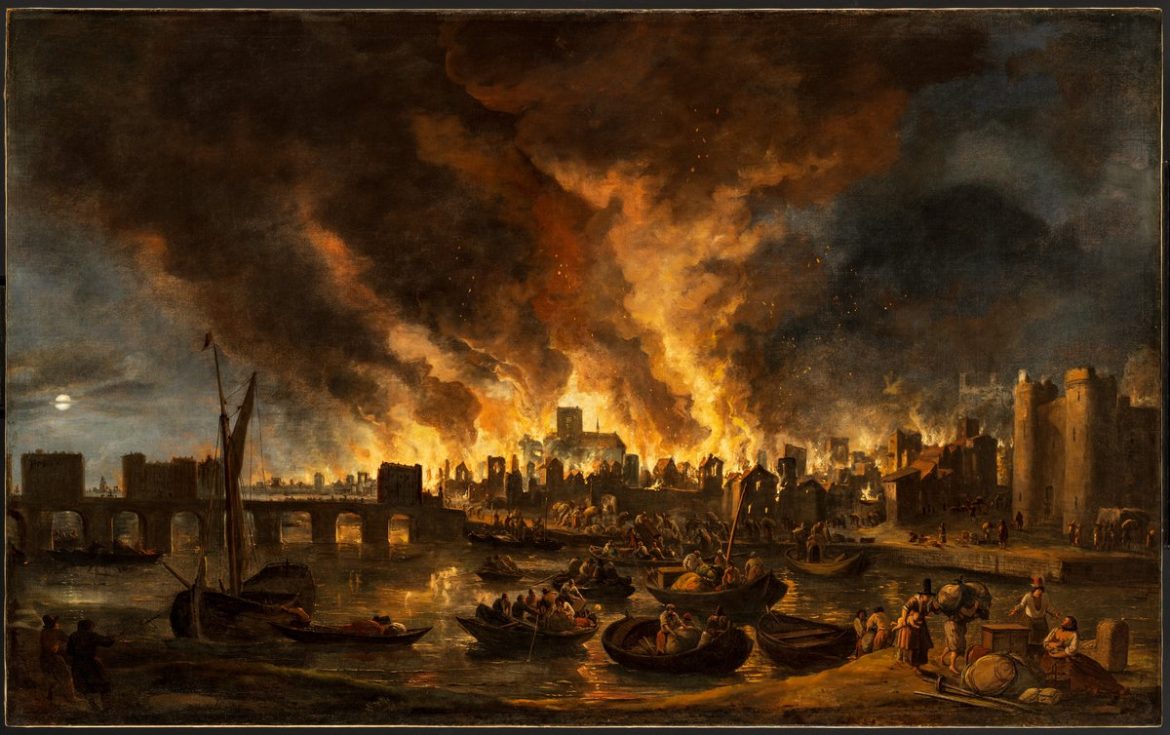England has experienced its fair share of disasters throughout history. Some of the most significant disasters have shaped the country’s history and have had long-lasting effects on the country’s people, culture, and economy. From natural disasters to man-made tragedies, here are the ten biggest disasters that England has faced.
- The Great Fire of London (1666)
The Great Fire of London, which started on September 2, 1666, and lasted for three days, destroyed the majority of the city. The fire was started in a bakery on Pudding Lane, and due to strong winds and the city’s wooden buildings, it quickly spread. It was finally put out after the King ordered the use of gunpowder to create firebreaks. The fire destroyed over 13,000 homes and 87 churches, and an estimated 100,000 people were left homeless.
- The Black Death (1348-1350)
The Black Death was a plague that swept through England in the mid-14th century. It was caused by the bacterium Yersinia pestis, which was spread by fleas living on rats. It is estimated that up to one-third of the country’s population died from the disease, which had symptoms that included fever, chills, and the appearance of black boils.
- The Hillsborough Disaster (1989)
The Hillsborough Disaster was a tragedy that occurred on April 15, 1989, during an FA Cup semi-final football match between Liverpool and Nottingham Forest. Due to poor stadium management and overcrowding, 96 Liverpool fans were crushed to death in a crush in the stands. The disaster led to a widespread re-evaluation of stadium safety, and the families of the victims campaigned for justice for decades.
- The Aberfan Disaster (1966)
The Aberfan Disaster was a catastrophic collapse of a coal mining waste tip that occurred on October 21, 1966. The tip had been built on a hill above the village of Aberfan, and when it collapsed, it sent a slurry of coal waste and water down the hillside, burying a local primary school and nearby homes. 144 people, including 116 children, were killed.
- The Great Storm of 1987
The Great Storm of 1987 was a hurricane-strength windstorm that hit the UK on the night of October 15-16, 1987. The storm caused widespread damage, with winds reaching up to 120 mph. It led to 18 deaths and left hundreds of thousands of homes without power for several days.
- The Piper Alpha Disaster (1988)
The Piper Alpha Disaster was a catastrophic explosion and fire that occurred on the Piper Alpha oil rig in the North Sea on July 6, 1988. The explosion killed 167 men and was caused by a gas leak that ignited. It remains the world’s deadliest offshore oil disaster.
- The Grenfell Tower Fire (2017)
The Grenfell Tower Fire was a devastating fire that occurred on June 14, 2017, in a high-rise apartment building in West London. The fire started in a refrigerator and quickly spread, leading to the deaths of 72 people. The disaster raised concerns about building safety, and the government launched a public inquiry into the causes of the fire.
- The Bradford City Stadium Fire (1985)
The Bradford City Stadium Fire occurred on May 11, 1985, during a football match between Bradford City and Lincoln City. The fire started in the main stand of the stadium and quickly spread due to a build-up of debris underneath the stands. 56 people were killed, and over 250 were injured.
9. The London Bombings (2005)
The London Bombings, also known as the 7/7 attacks, were a series of coordinated suicide bombings that took place in London on July 7, 2005. The attacks were carried out by four British Muslim extremists who had been radicalized by al-Qaeda. The bombings targeted commuters during rush hour, with three bombs exploding on the London Underground and one on a bus. A total of 52 people were killed, and over 700 were injured.


